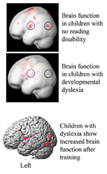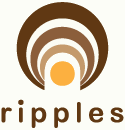Dyslexia Therapy 
SOUNDS IN SYLLABLES-Multisensory, Structured, Language (Dyslexia) Therapy
Most people can learn to read and spell just by being exposed to the written language. These people quickly become proficient readers and easily understand the structure and rules of the language without ever being taught or brought to their conscious level.There are some perfectly regular student who can communicate orally, try very hard to learn, and have had excellent teaching by the usual traditional methods, but who still have extreme difficulty remembering words both for reading and writing. For someone who is bright and successful in many ways and yet lacks the inborn talent for reading and spelling the printed words can be most frustrating and painful experience. The terms specific language disability or dyslexia are often used to refer to this disorder.
Sounds in Syllables, is an Orton-Gillingham based multisensory and structured, language (dyslexia) therapy which provides the foundation for successful, diagnostic reading and spelling instruction for person with dyslexia or learning difficulties. It contains all the required elements recommended by the national reading panel, USA in its 2000 report on scientifically based research in reading instruction.
Certified Academic Language (Dyslexia) Therapist are specially trained to deal with children and adults diagnosed with written language learning disabilities such as Dyslexia, Dysgraphia, Developmental reading disorders and other related learning problems. The therapist role is to ensure that the student’s brain is receiving as many correct responses as it needs to build in new, efficient pathways for solid storage and retrieval of information.
Salient Feautures:
- Instructional methods which break a task down into steps #1,2,3,4, etc are considered excellent and the majority of students taught by these methods will be successful. But for some, it is far too big a jump between each of those steps. Sounds in syllables, breaks down that same task into step #1, 11/16, 1 2/16,1 3/16......the smallest of details is taught, and sufficiently practiced before a new step is added.
- While some cooks are ready for the techniques described in recipe book, others need a recipe book that begins with ‘step 1- Face the stove’. So it is with reading, writing and spelling instruction for dyslexic learners. Sounds in syllables, is a ‘Face the stove’ kind of approach.
- Sounds in Syllables’ material and procedures are uniquely designed to develop the skills of severely dyslexic learners .it assumes nothing about what the student already knows and gives them the opportunity to start completely over and teach everything a student needs, in an effective manner.
- Sounds in Syllables progresses slowly, logically, in a non-threatening way and allows student enough guided practice to unlearn their guessing approach to reading and spelling and replace it with a more relaxed, confident, and accurate one.
- In Sounds in Syllables, after each new letter and sound is introduced, through a multisensory linkage procedure, the student reads and spells syllables, words, phrases, sentences and paragraphs, which can be formed using previously taught and newly introduced information.

What does research says about this:
Carnegie Mellon University scientists Timothy Keller and Marcel Just have uncovered the first evidence that intensive instruction to improve reading skills in young children causes the brain to physically rewire itself, creating new white matter that improves communication within the brain. Science Daily - Dec. 10, 2009.http://www.cmu.edu/news/archive/2009/December/dec9_brainrewiringevidence.shtml




